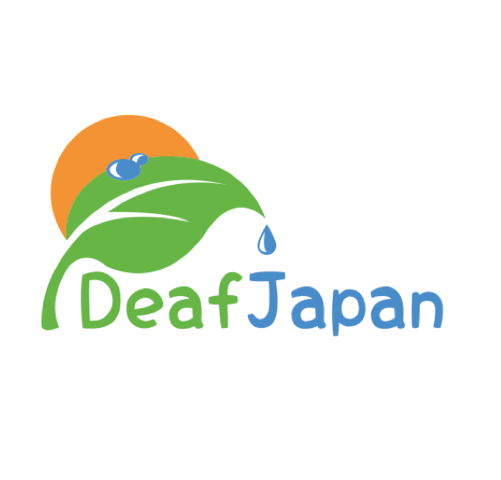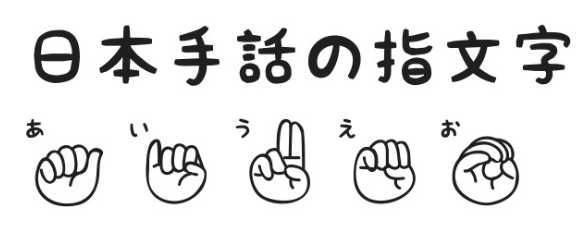How did Japanese Sign Language Develop?
Just like many countries across the globe, Japan has its own sign language called Japanese Sign Language which is also known as JSL. About 60% of the hearing impaired use JSL, but this hasn’t always been the case.
Japanese Sign Language Alphabet “A, E, I, O, U” 手話の指文字『あいうえお』
Japanese Sign Language: A Late Bloomer
It was in 1760 when the first sign language was developed in France and it made its way across other European countries; but when it comes to Japanese sign language, we have to fast forward about one-hundred years.
In 1878, the very first school for deaf was built in Kyoto where they established the fundamentals of JSL by the lead of Tashiro Furukawa (古河太四郎), the pioneer of the deaf community in Japan. Tashiro explored variety of educational methods in the beginning, but decided to focus on sign language after observing deaf students communicating with each other in their unique hand signs.
A symposium on education for the hearing impaired was held in 1908 in Tokyo for the first time. The leader of the Deaf community from Kyoto also attended this event which unified two largest Deaf communities in Japan. This caused rapid development of Japanese Sign Language as well as the establishment of The Japanese Federation of the Deaf.
However, it still took about another 60 years until JSL was accepted across the entire nation.
During that period of time, Japanese sign language was facing two major issues.
Is Japanese Sign Language standardized? Different regional Japanese Sign Language dialects exist and can caused confusion
The first issue: Due to regional differences and pre-modern transportation, Deaf Japanese people naturally developed or were taught different styles of Japanese sign language. This made it difficult for them to communicate with each other. Especially, when a Deaf Japanese person was conversing with another Deaf Japanese person from other region, or who had learned from a different source, community or teacher.
Even today, there are 2 different signs for "Name" (名前) in Japanese sign language.
Here is video example of “Name” in Kansai Japanese Sign Language Dialect and Kanto Japanese Sign Language Dialect:
Kansai dialect Japanese Sign Language vs Kanto dialect Japanese Sign Language.
「関西弁手話」vs「関東弁手話」
Even though, there are 2 different Japanese Sign Language for “Name” used by Deaf Japanese people in the Kanto (East Japan) and Kansai (West Japan) regions of Japan, many people are familiar with both JSL versions of “Name”. However, there are still regional specific signs which can lead to a pause in a conversation for clarification.
A hearing equivalent of this situation would be as if a U.S. North Easterner from Maine and a Southerner from Louisiana having a conversation. They most likely would understand each other, but have word specific references that would be commonly used in their regions or home towns.
The second issue: Japanese sign language was stripped away from the Deaf Pre World War, there was a big push for lip-reading education for deaf. This may have been due to the unfortunate effects of the Milan Conference 1880. This was a dark period for Deaf people all over the world. Non-deaf educators decided to ban teaching, learning or use Sign Language in schools. In 2010, the International Congress on the Education of the Deaf (ICED) regretted the actions of the Milan Conference.
The reasoning behind the push for lip-reading was for deaf people to communicate with people who don’t speak sign language. This was first introduced by, Yoshinosuke Nishikawa (西川 吉之助), whose daughter was deaf.
He was concerned that his beloved daughter would be discriminated if she was only able to communicate in Japanese sign language.
He, just like many parents who were ignorant of the benefits of sign language, wanted his daughter to not have any disadvantages in hearing society because of her disability. He and his daughter promoted lip-reading education style strongly through media. They were on radio shows and conferences. Many people were inspired by their success.
A Devastating Setback in Deaf education for Deaf Children in Japan
Lip-reading is extremely challenging to grasp and impossible to master. Even hearing people, who have grown up hearing words and sentences their whole lives, could not lip-read more than a few obvious words, even if their lives depended on it.
For those who were profoundly deaf, they were forbidden to use Japanese sign language in school. This often meant that Deaf Japanese student would have to secretly communicate in sign language with each other. If they were caught doing this, teachers would corporal punishment by using rulers and slapping hands of Deaf students who used sign language. This physical abuse was approved by the principles to reinforce lip-reading. Even Deaf children who failed to produce the correct sounds of words were slapped across the face by teachers and their own parents.
Many Deaf in Japan suffered through their adolescent year. Then they were released into the society as adults without proper communication tools and lived with severe post traumatic stress or even post-traumatic stress disorder.
The Rise of Japanese Sign Language
Some educators and activist for the Deaf were fighting for the rights of the Deaf. Some took on the role of working as sign language interpreters so the Deaf would have more, if not equal, opportunities in employment, marriage, social services, etc. The Deaf in Japan, highly discouraged by their parents and relatives from marrying other Deaf people. This was do to their parent’s fear of future grandchildren being born deaf. Even though, the majority of Deaf couples who have children, end up with non-deaf children.
True rise of Japanese sign language took place in the 60s.
JSL learning group “Mimizuku” was formed in Kyoto in 1962 which lead to the development of many other leaning groups all over the nation.
The The Japanese Federation of the Deaf (全日本ろうあ連盟) was established in 1947, and started publishing a book series “Watashitachi no Shuwa” ( Our Sign Language 私達の手話 ) in 1969 and it finally installed the standard Japanese Sign Language as we know today. Education and the rights for Deaf was spreading slowly but surely.
Social equality movements for the Deaf in Japan started to become very active around the same time. Even though Deaf Japanese citizens were not allowed to hold driver’s license, which led them to have very limited opportunities especially for employment prior to this era, a symbolic trial was held in 1968 which resulted in giving them the chance to get a driver’s license.
Meanwhile, Kyoto City had the first sign language interpreter at an assembly. Soon after, Tokyo City followed suit and made arrangements for sign language interpretation during election campaign speeches as well.
The 60s was unmistakably the blooming era for JSL.
The Social Acceptance of Japanese Sign Language on the National Level
In the 70s, there was a lot of development and improvement of social recognition and acceptance for the Deaf. Significant effort was put by the nation which lead to the establishment of businesses and government departments to better the quality of life for the Deaf.
As a result, movement amongst the Deaf in Japan was accelerated. Many activists submitted petitions to the local government hearings, marched on the street, and conducted signature rallies in order to practice the right to have sign language interpretation recognized in Japan.
In the course of this process, the National Research Association for Sign Language Interpretation (全国手話通訳問題研究会)was formed in 1974. This group was nationwide and followed the policy of Japanese Federation of the Deaf. It was necessary to unite and organize Japanese sign language interpreters to advance sign language community and education.
Unified power of the deaf
It was important to emphasize the solidarity of the Deaf community in Japan and the many sign language groups throughout the country. These communities were the main source of power for the development of Japanese sign language. However, it was crucial that the Deaf and hearing, work together to develop a social system that would improve the quality of life for Japanese Deaf people.
JSL in Modern Japanese Society
Statistics show that 60% of the deaf population in Japan use Japanese sign language, but some younger people tend to prefer MSJ over JSL. MSJ was not taught in schools for deaf until 2002, but it’s making a comeback. A lot of times, MSJ is taught to non-deaf people in Japanese sign language learning circles.
New technology may be able to help sign language education in Japan.
Whether you learn Japanese Sign Language or Manually Coded Japanese, they have a very basic factor in common; it’s is a visual communication. Therefore, the tools and the methods that are provided for sign language have been very limited, but some startup companies are trying to change that.
Japanese company ShuR developed IT services focused on sign language which they call “Tech for Deaf” . They offer an internet-based video call interpretation service, similar to Video Remote Interpreting in the U.S. and also an online database of Japanese sign language words called “SLinto”.
Just like wikipedia, it is an open source online dictionary with the world’s first sign language keyboard.
You can also search Japanese sign language words, evaluate a JSL sign and register a new JSL sign.
Innovative technology like this might assist with better communication between the Deaf and hearing.
However, it is by far better and more fun to learn Japanese Sign Language to communicate with Japanese Deaf people directly. Having face to face interaction, learning about culture, visual jokes and human to human interaction with mutual respect, is something that cannot be easily replaced with technology.
Here are links to more resources about the history of Japanese Sign Language (all information is in Japanese):
http://www.d-b.ne.jp/d-angels/sub4-3.html
http://www002.upp.so-net.ne.jp/kurione/rekisi.html
http://hirotsuuken.com/wp-content/uploads/2012/11/18e9f574b5ec56a320449ad6d6509df3.pdf
http://forum.nise.go.jp/soudan-db/htdocs/index.php?key=mufyuezb9-471
https://ja.wikipedia.org/wiki/%E6%89%8B%E8%A9%B1#%E6%97%A5%E6%9C%AC%E3%81%AE%E6%89%8B%E8%A9%B1
https://deaflife-bridge.themedia.jp/posts/1312023
http://www.nhk.or.jp/heart-net/rounan/summary/2015/07/0718.html


